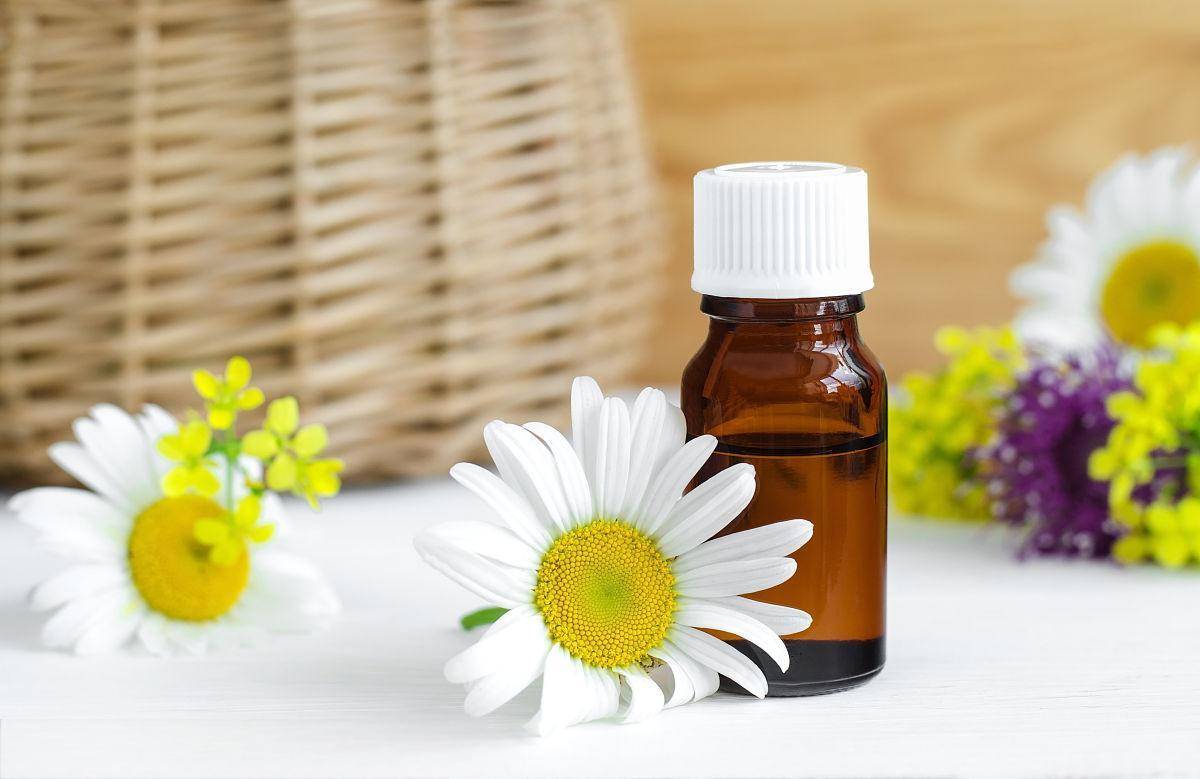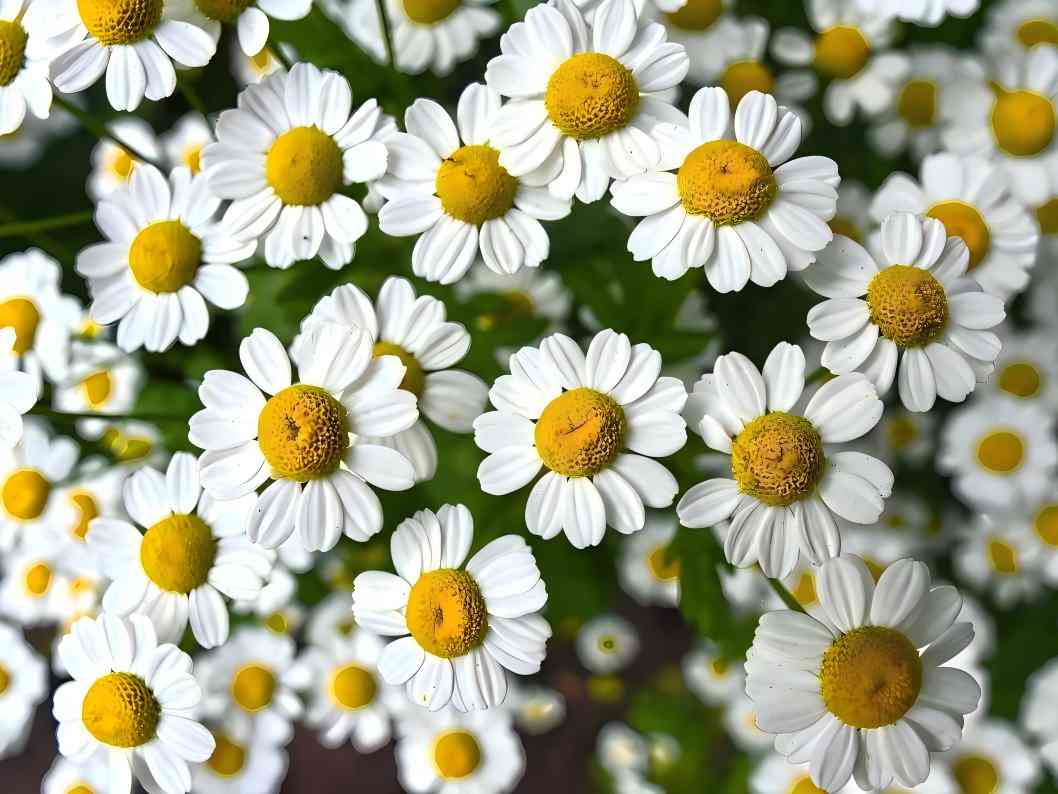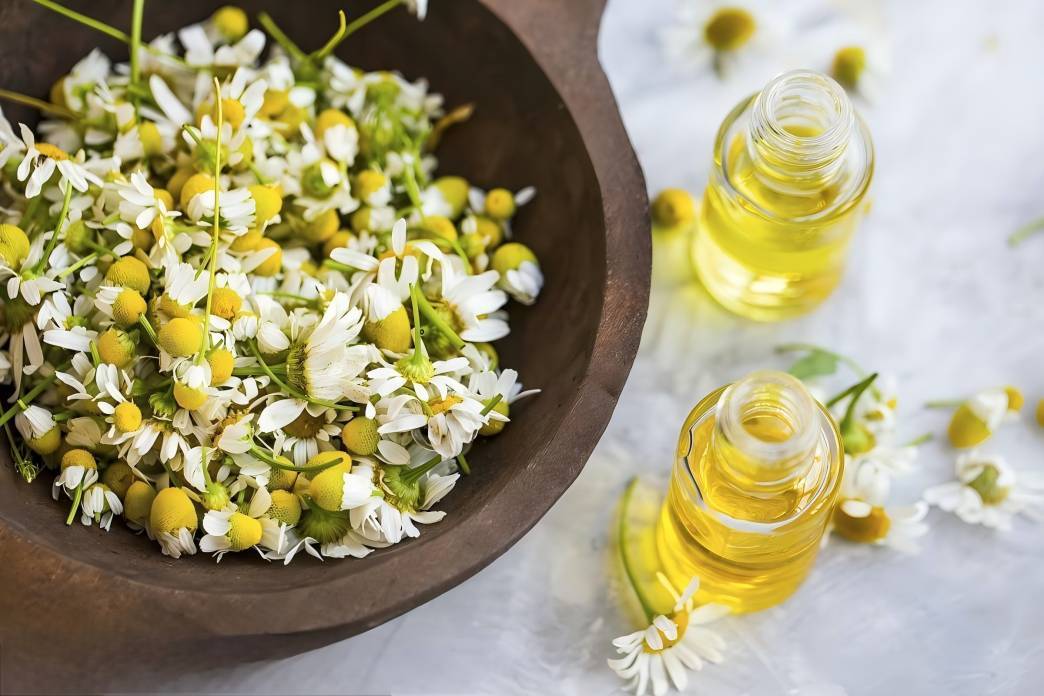What Is the Use of Chamomile Extract for Skincare Products?
Chamomile (Chamomilla recutita, also known as Matricaria) belongs to the Asteraceae family and is an annual herb native to Europe. Due to its strong adaptability, it is now grown in many parts of the world, such as Europe, Asia, the United States, and Australia. Chamomile is also cultivated in small quantities in Xinjiang, Hunan, Sichuan, and other places in China. Xinjiang chamomile is divided into two types: German chamomile, Matricaria recutita, is an annual herb; the other is Roman chamomile, Anthemis nobilis, a perennial herb [1-3].
Chamomile is one of the world's oldest, most widely used and best-documented medicinal plants. Chamomile is rich in nutrients and has a variety of biological activities, including lowering blood sugar and blood lipids, anti-oxidation and anti-inflammation. According to the Drug Standards of the Ministry of Health of the People's Republic of China (Uyghur Medicine Volume), it has the effects of nourishing the nerves, relieving pain and swelling, inducing sweating and laxative effects, diuretic and menstruation-regulating. It is often used for treating abnormal putrefactive body fluids, chronic headaches, constipation, poor perspiration, poor urination, menstrual blockages and other conditions [4].

As an ancient and widely used aromatic plant, German chamomile has been used as a folk remedy for centuries to treat skin wounds, and clinical trials have also shown that it can promote wound healing. These applications are attributed to the active compounds contained in its extract: sesquiterpenoids [such as α-bisabolol and bisabolol oxide (relative content ≤ 78%), p-cymene (relative content 1% to 15%)] and flavonoids [such as apigenin (relative content 16.8%), quercetin (relative content 9.9%), and luteolin (relative content 1.9%)] [3]. Although the multiple functions and effects of chamomile have been proven, the current development and application of chamomile are mainly focused on functional foods, and there has been less research on its application in cosmetics.
1 The main components and pharmacological effects of chamomile extract
Wan Wenting et al. [5] have isolated 120 components from chamomile extract, including 28 terpenoids, 36 flavonoids and 56 other compounds. The structural formula of some of the secondary metabolites of chamomile is shown in Figure 1.
1.1 Volatile oil
Volatile oil is the most important part of the development and utilization of chamomile. Gas chromatography-mass spectrometry analysis of German chamomile essential oil can analyze more than 30 major chemical components. Of all the compounds, the relative content of alkenes is 69.92%, alcohols 12.25%, and ketones 7.62%. Among these, matricaria is one of the most valuable components, which is a characteristic component of German chamomile essential oil. The relative content of matricaria in the essential oil is 7.94%, which is higher than average. German chamomile essential oil can promote the proliferation and migration of skin fibroblasts within a certain concentration range, and the promotion effect is dose-dependent. It has the effect of promoting skin wound healing and has great development and utilization value in the field of wound healing. Its mechanism of action may be related to promoting the proliferation and migration of skin fibroblasts and reducing the inflammatory response at the wound site. The volatile oil and methanol extract of chamomile have strong antibacterial activity, and their antioxidant activity is comparable to that of butylated hydroxytoluene (BHT) [6].
Stanojevic et al. [7] confirmed the presence of 52 components in chamomile volatile oil by gas chromatography-mass spectrometry and gas chromatography-flame ionization detection, Some of the components with relatively high contents are β-elemene (29.8%), α-farnesene (9.3%), α-bisabolol and its oxide (15.7%), matricin (6.4%), geraniol D (6.2%), and spiroketol (5.6%). The antioxidant activity was determined using the DPPH method. Chamomile essential oil showed the best antioxidant properties after 90 min, with a half-maximum effective concentration of 2.07 mg/mL. The antibacterial activity of chamomile essential oil was detected using the agar diffusion method. Chamomile essential oil had significant antibacterial activity, with inhibition zone diameters of 13.33 mm (against Listeria monocytogenes) to 40.00 mm (against Staphylococcus aureus).
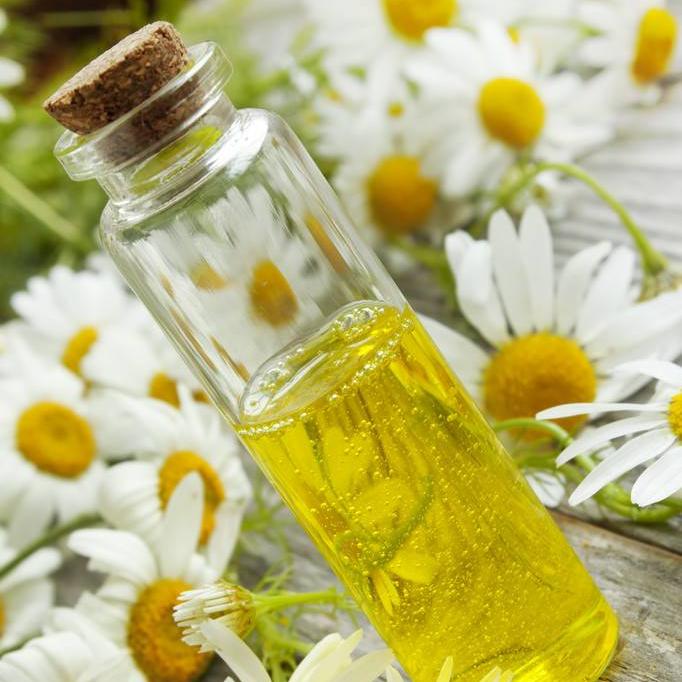
1.2 Flavonoids
Flavonoids are a group of compounds found in nature with a 2-phenylchromanone structure, mostly in the form of glycosides, and can form a variety of flavonoid glycosides due to differences in the type, quantity, position and mode of attachment of sugars. The relative content of flavonoids in chamomile is about 0.5%, and the content varies in different parts of the flower. The main flavonoids in chamomile are apigenin, luteolin, quercetin, and various flavonol glycosides. Literature [8-9] found that chamomile not only contains apigenin-7-O-glucuronide and apigenin-7-O-glucuronide, but also contains luteolin, coumarin (umbelliferone, 7-methoxycoumarin and dihydroxycoumarin), polysaccharides and organic acids. Flavonoids and coumarins are considered to be the main bioactive components of chamomile. The flowers also contain choline (relative content of about 0.32%), dandelion sterols, tridecane, carotene, picroside, and gums. Zhao et al. [10] discovered a rare octenone sugar acid and its derivatives in chamomile.
1.3 Terpenoids
Alpha-bisabolol (BISA) is an unsaturated sesquiterpene compound with a characteristic floral aroma that is mainly found in the essential oil of chamomile. BISA is widely used in cosmetics and other personal care products. In recent years, research on BISA has increased, demonstrating several biological activities of the compound, such as antibacterial, antioxidant, antimutagenic, antifungal, anti-injury and gastroprotective activities [11].
1.4 Polysaccharide compounds
Guimarães et al. [12] analyzed the chemical composition of a homogenate prepared from fully open chamomile inflorescences and the terminal soft leafy stem, which was about 8 cm long. They found that chamomile is rich in carbohydrates, and that the relative content, from most to least, is: fructose > glucose > sucrose > trehalose. Kocurik et al. [13] extracted polysaccharides from chamomile flowers and dried flowers, and found that it has good immunomodulatory properties, free radical scavenging capacity and antioxidant properties. Tan Huiwen et al. [14] used ultrasonic extraction with water and ethanol precipitation to obtain the polysaccharides, which were then hydrolyzed with trifluoroacetic acid. The content of the monosaccharide components in the two chamomile polysaccharides was determined using high-performance capillary electrophoresis (HPCE).
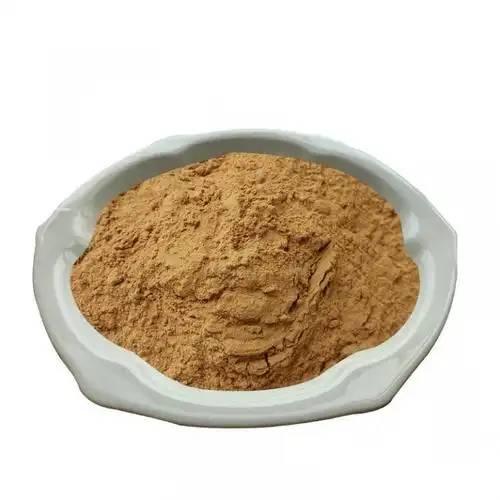
2 The efficacy and mechanism of action of chamomile extracts
2.1 Sensitivity-relieving effect
Sensitive skin (SS) refers to a hyper-reactive state of the skin under physiological or pathological conditions, mainly occurring on the face. The clinical manifestation is that the skin is prone to subjective symptoms such as burning, stinging, itching and tightness when stimulated by physical, chemical, mental and other factors, with or without objective signs such as erythema, scaling and telangiectasia [15]. Allergic reactions are mediated by histamine released from antigen-antibody complexes of immunoglobulin E (IgE) bound to high-affinity receptors (FCεRI) on mast cells. Mast cell activation leads to the degranulation process, which causes the release of mediators such as histamine and various other inflammatory mediators, such as leukotrienes, prostaglandins, proteases and a number of pro-inflammatory and chemotactic cytokines. Chandrashekhar et al. [16] investigated the anti-allergic activity of chamomile on a mast cell-mediated allergic model. The results showed that the methanol extract of chamomile had an inhibitory effect on the G protein activator-induced allergic reaction and a significant dose-dependent anti-itching property was observed by inhibiting mast cell degranulation. Chamomile methanol extract has strong anti-allergic activity by inhibiting the release of histamine from mast cells.
Another human experimental study showed that chamomile essential oil and flavonoids can penetrate deeper skin layers, which is key to their use as topical anti-inflammatory agents [17]. In addition, chamomile extract can inhibit the release of prostaglandin E2 induced by lipopolysaccharide (LPS), and limit the expression of inducible cyclooxygenase (COX-2) genes, ultimately inhibiting the activity of COX-2 enzymes and achieving inflammation prevention [18].
2.2 Repairing effect
Compared to natural aging, the acute and chronic damage caused to human skin by sunlight is more severe. Sunlight is composed of more than 95% UVA (400–315 nm), less than 5% UVB (315–280 nm), and UVC (280–100 nm), which is completely absorbed by the ozone layer and the atmosphere. When the skin is exposed to more UVA and UVB than it can tolerate, acute dermatitis occurs, which in mild cases can be seen as red spots with clear boundaries, and in severe cases can lead to edema or blisters, and be accompanied by itching, burning and pain. Chamomile is often used to treat minor skin irritations, including sunburn, rashes, ulcers, and even eye inflammation. Elisabetta et al. [19] studied the anti-UVB radiation-induced oxidative stress and inflammatory response of human corneal epithelial cells (HCEC-12) and its potential mechanism.
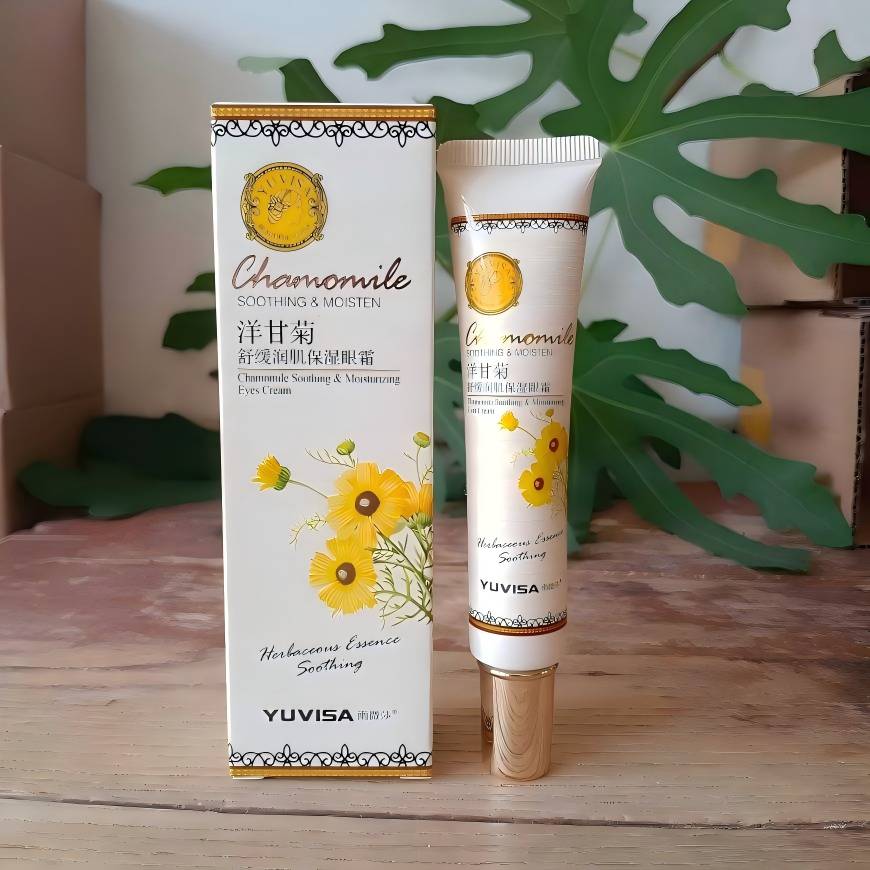
The product with added chamomile extract was able to protect corneal epithelial cells from UVB-induced cell death and improve wound healing, indicating that it has strong antioxidant activity, which can reduce the level of reactive oxygen species (ROS) and oxidative damage to proteins and lipids. The product also has anti-inflammatory activity by reducing COX-2, interleukin-1β (IL-1β), and nitric oxide synthase (iNOS) expression, offsetting UVB-induced GSS and superoxide dismutase-2 (SOD-2) expression, and restoring HO-1 [Nrf2 (gene encoding) regulated antioxidant factor] expression to control levels. The above research results show that chamomile extract can antagonize UVB radiation-induced oxidative stress and inflammatory response, and is also of reference value in the direction of skin after-sun repair and is worth developing and researching. Martins et al. [20] divided 125 male rats with ulcers into groups treated with test substances (test group) or untreated (control group), and the lesions were analyzed by clinical observation and histological wound healing grading. In addition, a comparison with animals treated with glucocorticoids showed that the animals treated with chamomile extract had significantly faster wound healing. Therefore, chamomile extract has potential application value in after-sun repair.
2.3 Acne-fighting effect
Acne is a common skin problem, and its main causes are as follows: (1) hyperfunction of the sebaceous glands caused by abnormal secretion of androgens; (2) abnormal keratinization of hair follicles; (3) abnormal proliferation of bacteria, commonly Propionibacterium acnes and Staphylococcus aureus; (4) inflammation, etc. [21]. The volatile oil and cyclic ether and flavonoids in chamomile inhibit the growth of fungi. A study of the antibacterial properties of aqueous chamomile solutions, ethanol, ethyl acetate and methanol extracts found that the methanol extract had the best antibacterial effect on Staphylococcus aureus and Propionibacterium acnes. In addition, the methanol extract of chamomile has an antibacterial effect on Aspergillus flavus, Candida albicans and Gram-positive strains [22].
2.4 Anti-aging effect
Free radicals are molecules, atoms and ions that exist in a free state and have unpaired electrons. Free radicals can cause damage to cell structures (lipids, proteins and DNA), which in turn leads to substantial structural and functional damage and is one of the causes of premature skin ageing. Antioxidants are molecules that inhibit the action of free radicals by regulating enzymes, scavenging and metal chelation, thereby preventing or delaying oxidative damage to cells. The results of different in vitro antioxidant models show that the methanol extract of chamomile has higher antioxidant properties than other extracts and essential oils [23]. In addition, the antioxidant activity is also affected by the extraction method. Aleksandra et al. [24] compared the antioxidant activity of chamomile extracts obtained by Soxhlet extraction, microwave-assisted extraction, ultrasound-assisted extraction and subcritical water extraction.
The subcritical water extract of chamomile showed the best antioxidant activity in the DPPH radical scavenging test (IC50 of 0.021 mg/mL) and the reducing power test (IC50 of 0.57 mg/mL). In the ABTS test, the subcritical water extract (IC50 3.7 μg/mL) showed better antioxidant activity than the controls butylated hydroxytoluene (BHT) and α-tocopherol [23]. The compounds luteolin-7-O-β-D-glucuronide and luteolin isolated from the methanol extract of chamomile had a significant effect on DPPH radical scavenging activity, with IC50 values of 7.24 μmol/L and 8.92 μmol/L, respectively, and are speculated to be the main active substances in chamomile's antioxidant effect.
Bhaskaran et al. [25] studied the protective effect of an ethanol extract of chamomile against H2O2-induced stress in RAW 264.7 mouse macrophages. The results of this study revealed the mechanism by which chamomile induces phase II enzymes through the Keap1-Nrf2 signaling pathway, and provided new evidence for the antioxidant and cytoprotective properties of chamomile.
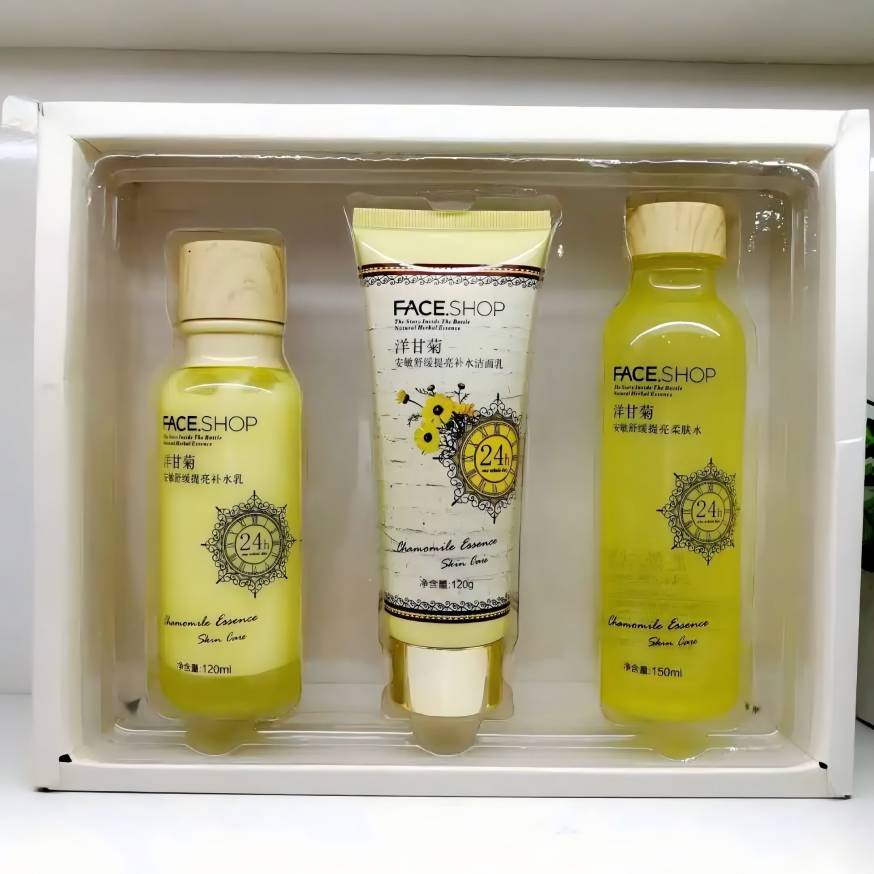
2.5 Whitening effect
Tyrosinase is the rate-limiting enzyme in the synthesis of melanin, and whitening can be achieved by inhibiting tyrosinase activity. Wang Guolin et al. [26-27] found that chamomile extract extracted with 95% ethanol by volume had an inhibitory effect on tyrosinase activity. 30% (by volume) ethanol was then used as an eluent, eluted through a small-pore resin column (MCI), and the eluate obtained was most sensitive to tyrosinase inhibition. The eluate was separated to obtain three compounds, which were identified by nuclear magnetic resonance as kaempferol-3-O-β-D-glucopyranoside, isorhamnetin-3-O-β-D-glucopyranoside, Kaempferol-3-O-(6"-3-hydroxy-3-methyl-glutaroyl)-β-D-glucopyranoside, all of which are flavonoids. It can be inferred that the flavonoids in chamomile extract have the potential to whiten the skin.
3 Safety studies on chamomile
Chamomile is a commonly used plant ingredient in cosmetics, and it is important for consumers to determine the safety of chamomile ingredients added to cosmetics. Avonto et al. [28] used a non-animal method for the skin sensitization risk assessment of chamomile, and selected 30 ingredients for further validation studies using chemical and in vitro methods. The results showed that most compounds are non-sensitizing.
According to the classification of the scope of application or use of cosmetics in the Safety and Technical Standards for Cosmetics (2015 Edition), they are generally divided into two categories: rinsing and resident. Rinsing cosmetics refer to those that are used on the surface of the human body (skin, hair, nails, lips, etc.) and washed off in time after use; resident cosmetics refer to those other than rinsing products. The reference information used in the exposure assessment of toxicological safety assessments varies depending on the form of product use. The “Inventory of Cosmetic Ingredients” (2021 edition) indicates the maximum historical upper limit for the use of raw materials. The instructions for use also indicate that only the historical maximum use information for raw materials in resident products is available, and the information for rinsing products can be used with reference to the information for resident products. For the safety assessment method of cosmetic ingredients, you can refer to the “Inventory of Cosmetic Ingredients” (2021 edition) and the evaluation conclusions of the Cosmetic Ingredient Review (CIR) of the United States and other international authoritative institutions. The safety assessment of cosmetic ingredients can indicate their safety and serve as a reference for their use in cosmetics, so as to minimise adverse cosmetic reactions caused by the ingredients.
According to the CIR assessment conclusions, the safe usage levels (mass fraction) associated with chamomile are as follows:
(1) The safe content of Matricaria recutita (Chamomile) flowers in resident cosmetics is 0.002% to 0.2%, and the safe content in rinsing cosmetics is 0.00001% to 0.018%.
② The safe content of chamomile (Chamomilla recutita) flower/leaf extract in resident cosmetics is 0.002% to 0.1%, and in rinsing cosmetics it is 0.0002% to 0.02%.
③ The safety level of Matricaria (Chamomilla recutita) flower extract in resident cosmetics is 0.000 004% ~ 0.5%,
and the safety level in rinsing cosmetics is 0.000 000 5%0.2%.
④ The safety level of chamomile (Chamomilla recutita) flower oil in resident cosmetics is 0.01% to 0.2%, and in rinsing cosmetics it is 0.000 01% to 0.29%.
⑤ The safe content of chamomile (Chamomilla recutita) extract in resident cosmetics is 0.000 002% to 0.4%,
and the safe content in rinsing cosmetics is 0.000 17% to 0.61%.
(6) The safety level of Matricaria chamomilla (Chamomilla recutita) oil in rinsing cosmetics is 0.000 05% [29].
4 Current status of the application of chamomile in cosmetics
China's cosmetics market has great potential for future development and a large market size. It is expected to continue to maintain its position as the world's leading cosmetics market in the next five years. With the rapid recovery and sustained growth of the Chinese economy, China has become one of the world's most promising cosmetics markets. In the future, driven by the demand for instant beauty and the pursuit of individuality, China's cosmetics consumer market will grow at an even faster rate. It is estimated that by 2027, China's cosmetics market will reach 157.7 billion U.S. dollars, with a compound annual growth rate of about 11% from 2022 to 2027. In the field of personal care products, natural and functional personal care products conform to people's consumer psychology of returning to nature, and the development of new plant-based personal care products has become an important research topic in the global personal care industry. However, the research and application of chamomile in the field of personal care products in China is not yet sufficient.
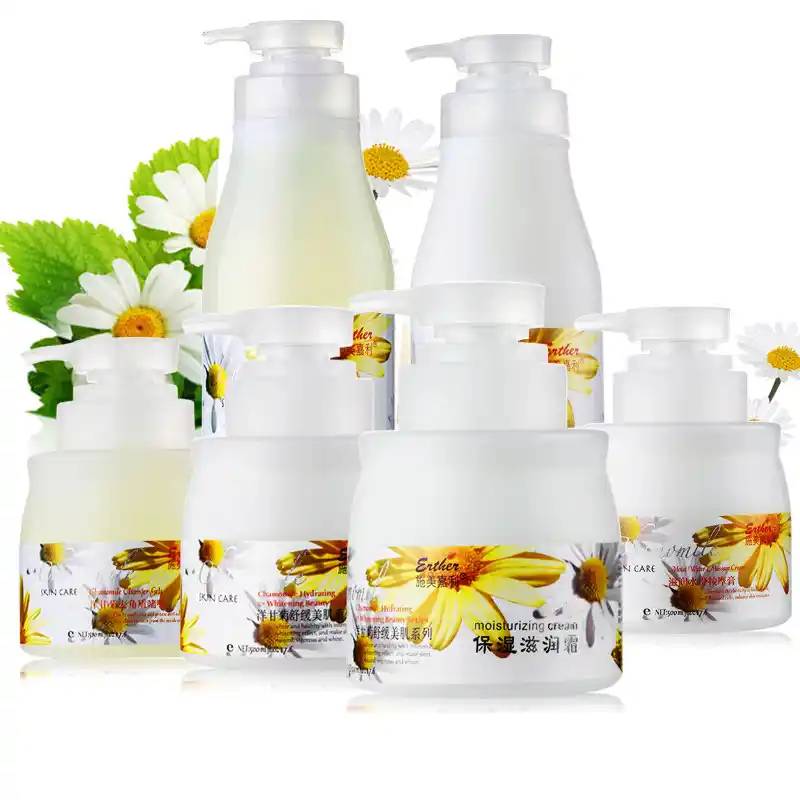
As of December 31, 2021, a search of the database of the National Medical Products Administration using the term “Chamomilla recutita flower extract” yielded a total of more than 24,000 domestic non-special use registered cosmetics, 9,651 registered brands, and 1,727 registered factories. The sales of products related to “Chamomilla recutita flower extract” reached 1.75 million, with sales of nearly 20,000 units [in the “Catalogue of Used Cosmetic Ingredients” (2021 edition), “chamomile extract” is included as “matricaria flower extract”]. At present, the core efficacy area of plant materials developed from chamomile for use in cosmetics is soothing and anti-allergy. A search using the keyword “chamomile” in the global patent database of Wise reveals that there are 6,964 patents for cosmetic applications (worldwide), including 3,246 technical patents in the Chinese market.
A search using the key word “sensitivity” as the main keyword returned 43,561 patents for use in cosmetics, of which 1,852 were for chamomile as the core ingredient. It is the second most widely used functional plant ingredient in cosmetics after aloe vera.
The most famous chamomile ingredient brand among major domestic and foreign brands is “German Chamomile” (Herbacin Wuta), which is one of the oldest natural skin care brands in Germany. According to the data analysis platform of the American Beauty Research Institute (the market share is in brackets), other brands include Ophel (35.7%), Bisuting (8.68%), Bingju (8.68%), Miaofangqingyan (7.96%), Renhe Jingxin (7.4%), Belle Maison (7.11%), Muji (6.26%), Agelia (6.12%), Hanjiani (6.12%), and Wanmei (5.97%) all occupy a certain market share. This shows that their market value is gradually being recognized by major businesses.
5 Outlook
As people's quality of life continues to improve and they gain a deeper understanding of skin care, their demands for cosmetics are evolving towards a higher level. People are paying more attention to cosmetics that are naturally derived and have fewer side effects, so plant-derived skin care products are becoming more popular. Chamomile contains a variety of active ingredients, such as essential oils, flavonoids, terpenes, polysaccharides and other substances, which are expected to have good soothing, repairing, anti-acne, anti-aging, whitening and other effects. In terms of application scenarios, chamomile is particularly effective in soothing and repairing, and can be further used for sunburn repair after outdoor sports. In terms of focusing on key populations according to market demand, men's skin has strong sebaceous gland secretion and is prone to clogged pores, etc., and chamomile's antibacterial and bacteriostatic effects provide a possibility for men's skin care.
As scientific research progresses, the potential value of the active ingredients in chamomile will surely be continuously developed, and the application prospects of chamomile in cosmetics will become even more promising.
Reference
[1] GÓMEZ-SERRANILLOS M S, GONZÁLEZ-BURGOS E, GÓMEZ-SERRANILLOS M P. The pharmacology and clinical efficacy ofMatricaria recutita L.: a systematic review of in vitro, in vivo studies and clinical trials[J]. Food Reviews International, 2020, 38( 1): 1-35.
[2] KHANAM Z , SINGH O , MISRA N , et al. Chamomile (Matricaria chamomilla L.): an overview[J]. Pharmacognosy Reviews, 2011, 5(9): 82-95.
[3] SRIVASTAVA J K, SHANKAR E, GUPTA S. Chamomile: a herbal medicine of the past with a bright future (review)[J]. Molecular Medicine Reports, 2010, 3(6): 895-901.
[4] National Pharmacopoeia Commission. Standards for Drugs of the Ministry of Health of the People's Republic of China: Tibetan Medicine, Volume 1 [M]. Beijing: China Medical Science and Technology Press, 1995.
[5] Wan Wenting, Song Yanjun, Xu Lijia, et al. A review of research on Matricaria and an analysis of its application prospects [J]. Chinese Modern Traditional Chinese Medicine, 2019, 21(2): 260-265.
[6] Shen Junlian, Zhang Nan, Li Yuhong, et al. Research on the effect of German chamomile essential oil on promoting skin wound healing [J]. Chinese Agricultural Science Bulletin, 2020, 36(4): 67-75.
[7] STANOJEVIC LP, MARJANOVIC-BALABAN Z R, KALABA V D, et al. Chemical composition, antioxidant and antimicrobial activity of chamomile flowers essential oil (Matricaria chamomilla L.)[J]. Journal of Essential Oil Bearing Plants, 2016, 19(8): 2017-2028.
[8] MCKAY D L, BLUMBERG J B. A review of the bioactivity and potential health benefits of chamomile tea (Matricaria recutita L.) [J]. Phytotherapy Research, 2006, 20(7): 519-530.
[9] TSCH AN G M , KON IG G M , WRIGHT A D , et al. Chamaemeloside, a new flavonoid glycoside from Chamaemelum nobile[J]. Phytochemistry, 1996, 41(2): 643-646.
[10] ZHAO J P, KHAN S I, WANG M, et al. Octulosonic acid derivatives from Roman chamomile (Chamaemelum nobile) with activities against inflammation and metabolic disorder[J]. Journal ofNatural Products, 2014, 77(3): 509-515.
[11] Wu Shaoli. Determination of α-bisabolol mass concentration in chamomile by high performance liquid chromatography [J]. China Prescription Drugs, 2017, 15(3): 25-26.
[12] GUIMARÃES R, BARROS L, DUENAS M, et al. Nutrients, phytochemicals and bioactivity of wild Roman chamomile: a comparison between the herb and its preparations[J]. Food Chemistry, 2013, 136(2): 718-725.
[13] KOCURIK S, GIANITS L . Saccharides of the flowers of chamomile (Matricaria chamomilla L.) . II. Water-soluble polysaccharide[J]. Farmaceuticky Obzor, 1979, 48(3):111-118.
[14] Tan Huimin, Chen Bingting, Yilize Re·Aibaidula, et al. Study on the monosaccharide composition and in vitro antioxidant activity of German chamomile and Roman chamomile polysaccharides [J]. China Food Additives, 2022, 33(2): 161-167.
[15] He Li, Zheng Jie, Ma Huiqun, et al. Expert consensus on the diagnosis and treatment of sensitive skin in China [J]. Chinese Journal of Dermatology and Venereology, 2017, 31(1): 1-4.
[16] CHANDRASHEKHAR V M, HALAGALI K S, NIDAVANI R B, et al. Anti-allergic activity of German chamomile (Matricaria recutita L.) in mast cell mediated allergy model[J]. Journal of Ethnopharmacology, 2011 , 137( 1): 336-340.
[17] MERFORT I, HEILMANN J , HAGEDORN-LEWEKE U, et al. In vivo skin penetration studies of chamomile flavones[J]. Pharmazie, 1994, 49(7): 509-511.
[18] SRIVASTAVA J K, PANDEY M, GUPTA S. Chamomile, a novel and selective COX-2 inhibitor with anti-inflammatory activity[J]. Life Sciences, 2009, 85( 19/20): 663-669.
[19] ELISABETTA B , LORENZO C , MARIO D , et a l. Pharmacological activities of an eye drop containing Matricaria chamomilla and Euphrasia officinalis extracts in UVB-induced oxidative stress and inflammation of human corneal cells[J]. Journal of Photochemistry and Photobiol, B. Biology: Official Journal of the European Society for Photobiology, 2017: 618-625.
[20] MARTINS M D , MARQUES M M , BUSSADORI S K, et al. Comparative analysis between Chamomilla recutita and corticosteroids on wound healing: an in vitro and in vivo study[J]. Phytotherapy Research, 2010, 23(2): 274-278.
[21] Ju Qiang. Chinese acne treatment guidelines (2019 revised edition) [J]. Journal of Clinical Dermatology, 2019, 48(9): 583-588.
[22] Al-Dabbagh B, Elhaty I A, Elhaw M, et al. Antioxidant and anticancer activities of chamomile (Matricaria recutita L.)[J]. BMC Research Notes, 2019( 12): 3-10.
[23] C VETA NO VIC A , SVARC - GAJ IC J , MASK OV IC P, et al. Antioxidant and biological activity of chamomile extracts obtained by different techniques: perspective of using superheated water for isolation of biologically active compounds[J]. Industrial Crops & Products, 2015(65): 582-591.
[24] ALEKSANDR A C , JAROSLAVA Š , PAVLE M , et al. Antioxidant and biological activity of chamomile extracts obtained by different techniques : perspective of using superheated water for isolation of biologically active compounds[J]. Industrial Crops & Products, 2015(65): 582-591.
[25] BHASKARAN N, SHUKLA S, KANWAL R, et al. Induction of heme oxygenase-1 by chamomile protects murine macrophages against oxidative stress[J]. Life Sciences, 2012, 90(25/26): 1-7.
[26] Wang Guolin, Darje Drolma, Xu Deping. Research on the active ingredients of chamomile inhibiting tyrosinase [J]. Journal of Food and Biotechnology, 2018, 37(2): 191-194.
[27] Wang Guolin. Research on the active ingredients of chamomile whitening and moisturizing [D]. Wuxi: Jiangnan University, 2016.
[28] AVONTO C, RUA D, LASONKAR P B, et al. Identification of a compound isolated from German chamomile (Matricaria chamomilla) with dermal sensitization potential[J]. Toxicology and Applied Pharmacology, 2017(318): 16-22.
[29] JOHNSON W, BOYER I, BERGFELD W F, et al. Amended safety assessment of Chamomilla recutita-derived ingredients as used in cosmetics[J]. International Journal of Toxicology, 2018, 37(3): 51S-79S.


 English
English French
French Spanish
Spanish Russian
Russian Korean
Korean Japanese
Japanese